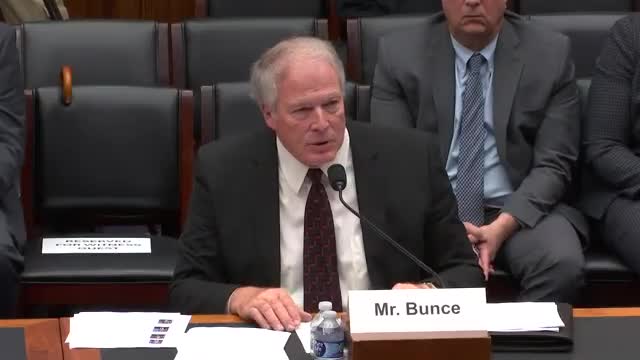FAA faces scrutiny over transition to less effective firefighting foam amid safety concerns
December 11, 2024 | Transportation and Infrastructure: House Committee, Standing Committees - House & Senate, Congressional Hearings Compilation
This article was created by AI summarizing key points discussed. AI makes mistakes, so for full details and context, please refer to the video of the full meeting. Please report any errors so we can fix them. Report an error »

In a recent meeting of the House Committee on Transportation and Infrastructure, discussions surrounding the FAA Reauthorization Act of 2024 highlighted critical safety concerns and regulatory challenges in the aviation industry. The atmosphere was charged with urgency as stakeholders addressed the implications of transitioning from traditional firefighting foams to newer, environmentally friendly alternatives.
One of the key topics was the use of firefighting foams, specifically the shift from Aqueous Film-Forming Foam (AFFF) to fluorine-free foam (F3). While AFFF has been recognized for its effectiveness in extinguishing fires, concerns about environmental contamination have prompted a push for alternatives. However, experts voiced apprehension about the performance of F3 foams, particularly in high-stakes situations like aircraft emergencies. The Naval Research Laboratory's findings underscored that F3 foams may not perform as effectively as AFFF, especially under challenging conditions such as high temperatures and windy environments.
Committee members expressed the need for clarity and support for airports during this transition. They emphasized that without federal assurances against liability for using AFFF, airports could face significant financial burdens. The discussion revealed a tension between environmental goals and the immediate safety needs of passengers and crew during emergencies. As one member pointed out, the idea of firefighters needing to be cautious with foam application during a rescue operation was alarming.
Training and knowledge transfer between industry and government were highlighted as essential for ensuring that new technologies are implemented safely. Stakeholders stressed the importance of equipping FAA personnel with the latest information on modern firefighting techniques and materials. This collaboration is seen as vital for building confidence in the regulatory framework surrounding these changes.
As the meeting concluded, the overarching sentiment was clear: while the push for environmentally friendly practices is commendable, it must not compromise the safety of those in the air. The committee's discussions set the stage for ongoing debates about how best to balance environmental responsibility with the urgent need for effective firefighting solutions in aviation. The future of air travel safety hangs in the balance as stakeholders navigate these complex challenges.
One of the key topics was the use of firefighting foams, specifically the shift from Aqueous Film-Forming Foam (AFFF) to fluorine-free foam (F3). While AFFF has been recognized for its effectiveness in extinguishing fires, concerns about environmental contamination have prompted a push for alternatives. However, experts voiced apprehension about the performance of F3 foams, particularly in high-stakes situations like aircraft emergencies. The Naval Research Laboratory's findings underscored that F3 foams may not perform as effectively as AFFF, especially under challenging conditions such as high temperatures and windy environments.
Committee members expressed the need for clarity and support for airports during this transition. They emphasized that without federal assurances against liability for using AFFF, airports could face significant financial burdens. The discussion revealed a tension between environmental goals and the immediate safety needs of passengers and crew during emergencies. As one member pointed out, the idea of firefighters needing to be cautious with foam application during a rescue operation was alarming.
Training and knowledge transfer between industry and government were highlighted as essential for ensuring that new technologies are implemented safely. Stakeholders stressed the importance of equipping FAA personnel with the latest information on modern firefighting techniques and materials. This collaboration is seen as vital for building confidence in the regulatory framework surrounding these changes.
As the meeting concluded, the overarching sentiment was clear: while the push for environmentally friendly practices is commendable, it must not compromise the safety of those in the air. The committee's discussions set the stage for ongoing debates about how best to balance environmental responsibility with the urgent need for effective firefighting solutions in aviation. The future of air travel safety hangs in the balance as stakeholders navigate these complex challenges.
View full meeting
This article is based on a recent meeting—watch the full video and explore the complete transcript for deeper insights into the discussion.
View full meeting